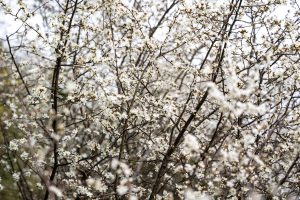North Highland wildlife diary - March 2013
Our monthly columnist from the Scottish Highlands
A long-time associate of Vine House Farm is Roger Hughes, who now lives in the north of Scotland and the beautiful county of Sutherland. Roger helps us with a range of business services, but he’s also a keen bird watcher, is very knowledgeable about feeding birds, is a general nature lover, and also partly earns his living from writing. He lives with his wife, Julie, and they have a small croft with a wide mix of habitats from wooded riverbank to meadow and moorland – all good for wildlife of course. So with all this in mind, Roger now writes a monthly column for the Vine House Farm website which we very much hope you’ll follow and enjoy.
North Highland wildlife diary – March
Most of us have a sign or event in our mind which signifies the start of spring. For some it might be the first snowdrops to push through the cold soil in early February (though you’d be a month or two later for such an event up here!), but for others it might be mid-April and the first swallow to gracefully drift over their garden. For me though, it’s the return of some our non-migratory bird species which none the less leave our land over the winter months and head for relatively less hostile habitat such as nearby coastal estuaries. And the first of these arrived back on the 17th March – a pied wagtail feeding on insects close to one of my wife’s Shetland ponies. And just the next day an oystercatcher flew over our garden and made its presence obvious with its noisy and shrill whistling (this species of wader nests in the rough meadows on and around our croft). However, since then and despite my initial excitement that spring had arrived, it’s been very cold, very windy with snow on the ground, and not a sight nor sound of either pied wagtail or oystercatcher! But anyway, I’ve now had my signs of spring so there’s no turning back now – whatever the weather brings.
The low temperatures we’ve had in the last week or so – most days barely more than two degrees in daylight hours and often minus five at night – has made me reminisce about the weather here this time last year, when we were positively basking in daytime temperatures of up to twenty degrees! The low temperatures have also meant things are behind on our land, with the grass barely showing any new growth and only radishes from my early sowing brave enough to germinate and poke above the soil line in the poly tunnel.
But the weather rarely stops me from getting out for a walk into the hills around us, so I’ve spent plenty of time of doing that of late. The upland areas are still relatively devoid of birds and will be until the migrants start to return in April, but there are still birds to see with a regular one being red grouse. Actually red grouse can be the cause of much stress to the bird watcher and hill walker, as they’ll sit motionless and very well camouflaged in the heather then explode from the ground into a noisy flight when you’re less than a metre away. The experience can be a real heart-stopper and especially if it’s the first sight or sound you’ve had of any living creature for an hour or more, and I often wonder if the effect on my health outweighs the benefits of the two hour walk!
With the cold and wintery weather still with us, our bird feeders have been seeing plenty of action with the chaffinch flock now up to around 200 birds! And like many species of song bird you can attract to your garden, if you give them a choice of food and that choice includes sunflower hearts, then it’s sunflower hearts they’ll go for – and right now in my garden that’s about 15kg of them per week! With so many chaffinches feeding and as they’re joined by smaller numbers of siskin, redpoll, greenfinch and goldfinch, just relying on hanging feeders simply isn’t an option so I spread a good quantity of the sunflower hearts on the ground. The advantage of doing this is that it largely frees up the feeders for coal tits, blue tits and great tits, all of which will take a sunflower heart from the feeder and fly to a branch where they’ll hold the seed in their feet and chip small pieces off to eat.
By this time next month one of my favourite birds will have returned from Africa and will hopefully be looking to again nest on our land – the wheatear. So look out for news on that, plus also news on the other returning migrants which will hopefully include osprey.


